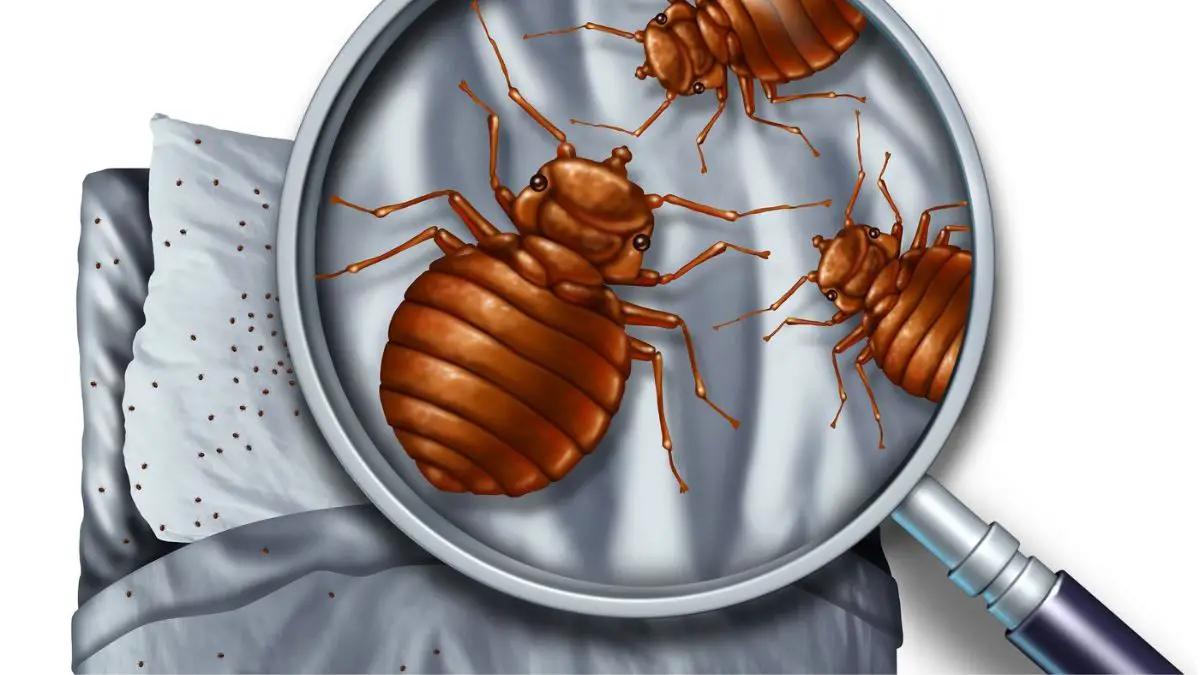Bed bugs are a common household pest that can give anyone sleepless nights. Many people wonder if these notorious insects are visible to the naked eye.
In this blog post, we will delve into the world of bed bugs, revealing their true size, appearance, and key characteristics.
So, let’s roll up our sleeves and expose these tiny blood-sucking foes!
Basics of Bed Bugs
Bed bugs are small, flat, wingless insects that feed exclusively on the blood of humans and animals.
They belong to the family Cimicidae and are scientifically known as Cimex lectularius.
Despite their minuscule size, which ranges from 1 to 7 millimeters long, bed bugs can cause significant discomfort and infestations in homes, hotels, and other dwellings.
Why Bed Bugs Are So Difficult to Spot
Due to their elusiveness and nocturnal nature, bed bugs are expert hiders. They prefer to reside in tight cracks, crevices, and seams near beds, couches, and other areas close to their human hosts.
Their flat bodies allow them to squeeze into the tiniest spaces, making detection challenging.
Moreover, bed bugs can camouflage themselves, blending with the environment and going unnoticed.
Appearance of Bed Bugs
Regarding appearance, bed bugs undergo various transformations throughout their life cycles.
Immature bed bugs, known as nymphs, are translucent and barely visible to the naked eye. As they feed and grow, their bodies become darker and more distinct.
Bed bugs acquire their characteristic brownish-red color at the adult stage. Adult bed bugs are wingless and have oval-shaped bodies, while their newly fed counterparts appear swollen and elongated.
Detecting Bed Bug Activity
Now that we’ve established that bed bugs are masters of disguise, how can we detect their presence? Although they are not easily visible, certain signs can indicate an infestation.
Key indicators include:
- Dark spots or stains on bedding, furniture, or walls caused by bed bug excrement
- Discarded exoskeletons during molting
- Small, red, itchy bite marks on the skin
- A musty odor from the infested area
Tips for Spotting Bed Bugs
While spotting individual bed bugs can be challenging, there are other visual cues to look out for.
Begin by examining your bedding, mattress seams, and headboard carefully. Utilize a flashlight if needed, focusing on any crevices where bed bugs might seek refuge during daylight hours.
Watch for any movement or small, oval-shaped insects scurrying away.
Remember, bed bugs may also hide in neighboring furniture, electrical outlets, and behind loose wallpaper.
What to Do When You Find Bed Bugs
If you spot bed bugs or signs of their presence, prompt action is crucial to prevent the infestation from spreading.
Contact a professional pest control service to assess the situation and develop an effective treatment plan.
Avoid eradicating bed bugs yourself, as this often leads to ineffective results and further dispersion.
Professional exterminators possess the knowledge, skills, and appropriate bed bug traps to eliminate these stubborn pests safely and efficiently.
Frequently Asked Questions (FAQs)
What other bugs can be mistaken for bed bugs?
Other bugs that can be mistaken for bed bugs include bat bugs, carpet beetles, chiggers, cockroach nymphs, spider beetles, and swallow bugs. Accurate identification is crucial for effective control. Seek professional help if you suspect an infestation.
How long can you have bed bugs without knowing?
You can have bed bugs for weeks or even months without knowing, as they are skilled at hiding in cracks and crevices during the day and primarily feed at night while you’re sleeping. It often takes time for their presence to become noticeable, especially in the early stages of an infestation.
Why am I getting bit at night but no bed bugs?
Possible reasons: Other pests present, delayed reaction to bed bug bites, bed bugs hiding well, small infestation in early stages, inconsistent feeding patterns, or lack of immediate allergic reactions. Inspect your sleeping area or seek professional pest control for identification and treatment if needed.
What is the main cause of bed bugs?
The main cause of bed bugs is usually the result of human activity, such as travel, used furniture, or sharing spaces with infested individuals, which allows the bugs to hitchhike and spread. They are not attracted by dirt or poor hygiene but are drawn to warmth and the presence of potential hosts.
Wrapping it Up
Bed bugs may be small, but their impact on our lives can be enormous. While bed bugs are visible to the naked eye, their elusive nature renders them difficult to detect.
Understanding their appearance, hiding spots, and signs of infestation can help us stay vigilant and take prompt action if necessary.
Remember to regularly inspect your sleeping areas, bites, and surrounding furniture to minimize the chances of a full-blown bed bug invasion.
By remaining proactive and seeking professional assistance when needed, you can sleep soundly , knowing that these pesky intruders have met their match!


